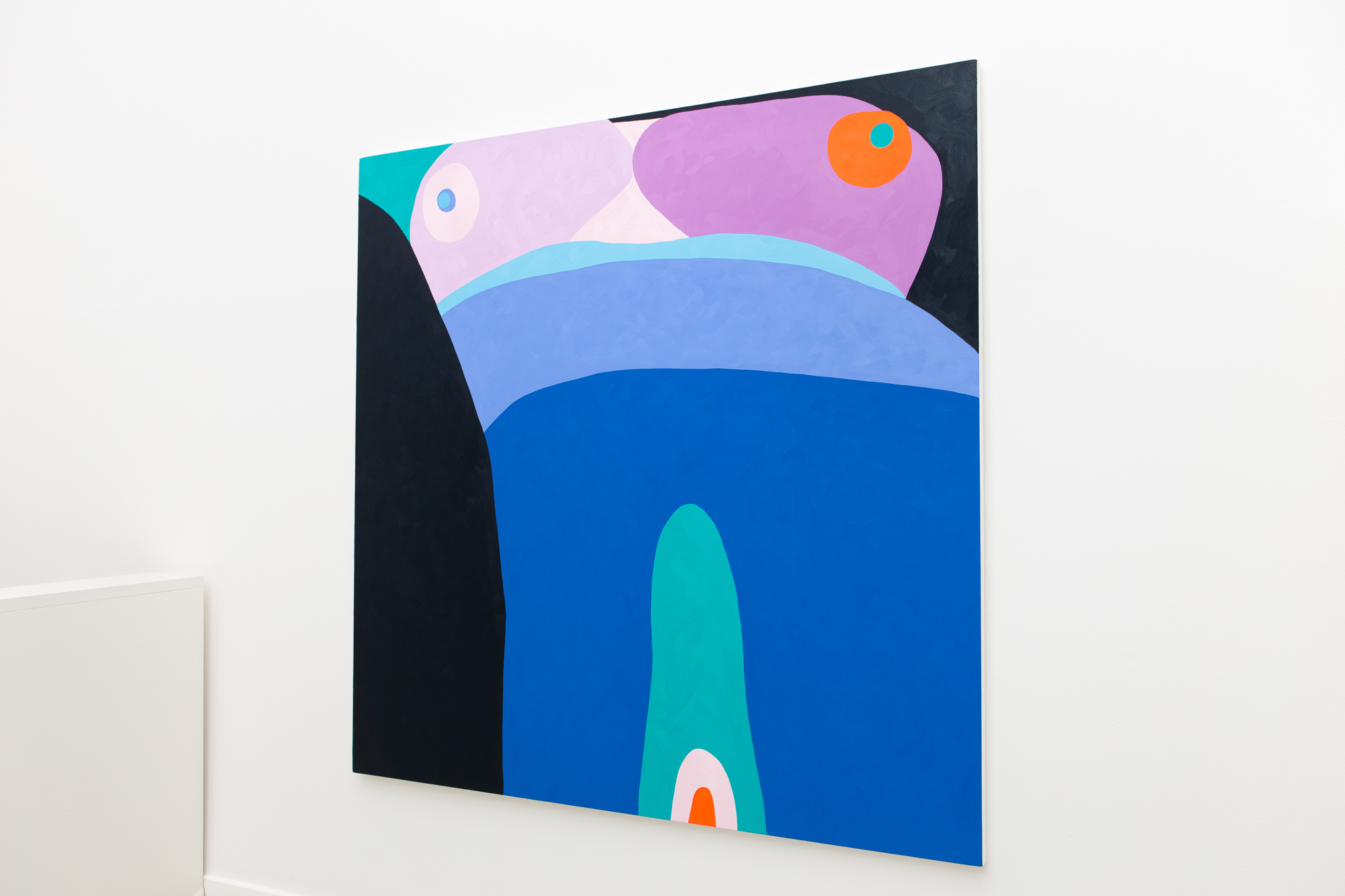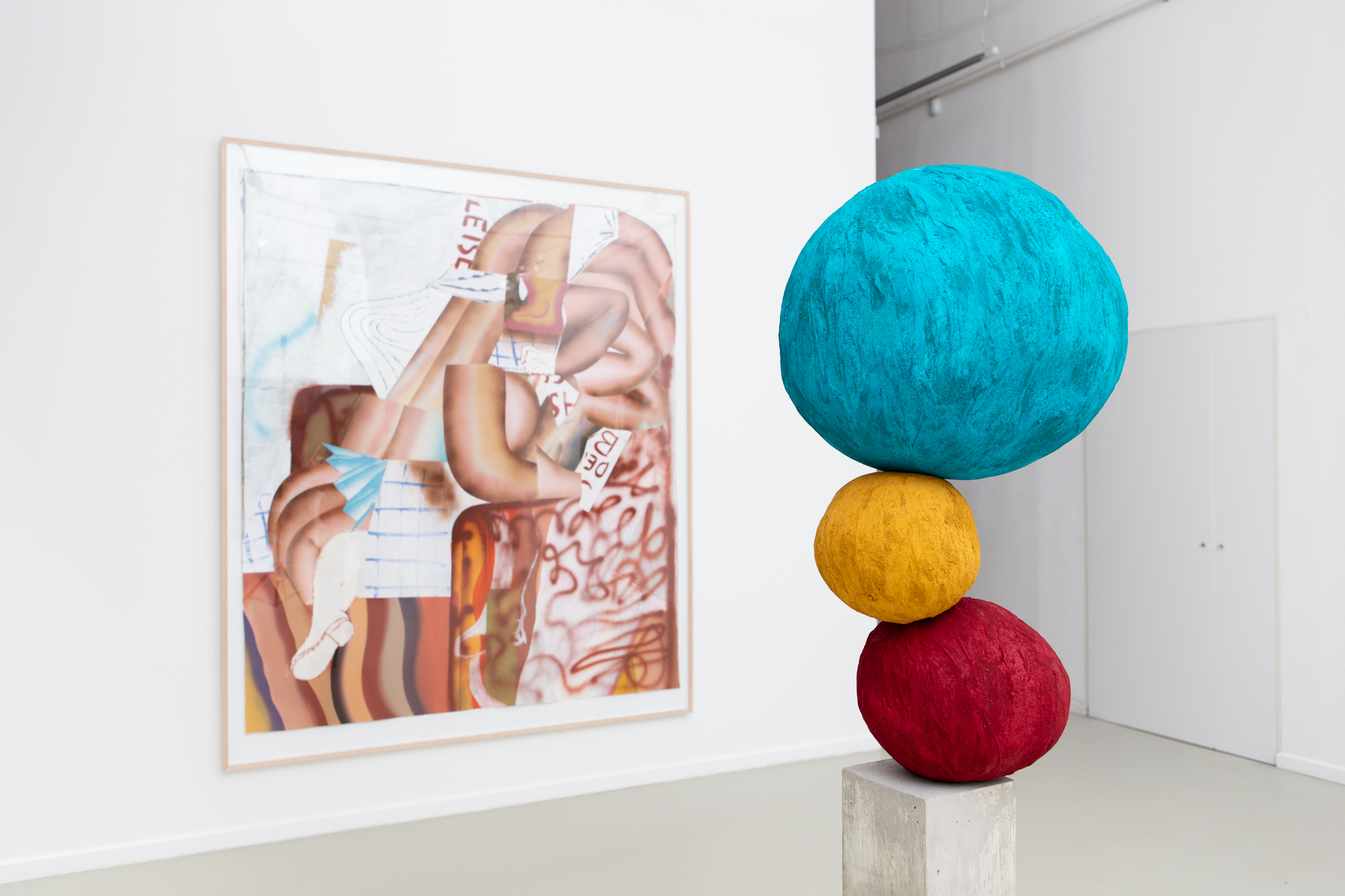










COLOURFUL
‘I am the form and I am the hollow, the thrust and the contour’ Barbara Hepworth
The exhibition brings together three internationally recognised artists. Each has developed a very par- ticular artistic practice that is poised between line and form and all have their own unique dialogue with major art movements from the 20th Century - be it referencing certain schools such as Cubism, Futurism, Abstract Expressionism and Pop Art or considering the impact of colour theory and its application as a space-making device, a surface ornamentor as an agent of emotional charge. Though the artists can be seen as picking up the interrupted conversations of modernism that were halted abruptly by two world wars and a global geopolitical divide, they also address decidedly contemporary themes in their work – not least in terms of how they choose to treat and depict their chosen subject matter.
The exhibition marks the 25th anniversary of Erika Deak’s eponymous Gallery in Budapest and is therefo- re deliberately undergirded with an historical framework that borrows from references to both the 20th and the 21st centuries. The decision to choose three celebrated women artists for the exhibition was also a deliberate one as Deak has always been a strong supporter of women artists, championing them long before it became fashionable to include more women in gallery programmes.
As the exhibition is divided across the work of three artists, so the title of the show explores three artistic concerns: form, contour, colour. This motivation was inspired by a quote from Barbara Hepworth, one of the most inspirational artists of the 20th century who produced some of its most seminal works. All three artists explore these preoccupations in distinctly different ways. Helen Beard focuses on the iconic canon of the nude in art - both male and female - but takes the subject of desire and the acts it inspires as the unifying factor between her works. The undulating forms and vivid use of colour, applied in thick, butte- ry slicks of paint, transform bodies into landscapes that often feel topographical with their contours and hollows. Beard is adept at immersing the viewer into these body scapes both by playing with scale and intensely contrasting colours, but also by using cropped close ups that heighten tension.
Redefining what was traditionally a very male gaze that focused on the objectification of women, Beard provides the space for a re examination of desire, sexual freedom and expression. Recently her works have started to become more abstracted, forcing the viewer to make their own personal and observed connections and to draw their own conclusions. The newer works are reminiscent of the iconic nudes of the American Pop artist, Tom Wesselmann but they possess much livelier, more sensual surfaces and their motivation is driven by a decidedly female perspective.
While Annie Morris may be best known for her deliciously tactile, gravity-defying stack sculptures of vividly coloured plaster or bronze spheres, she has consistently maintained a balance between line and form throughout her practice and is again investigating the fluidity of line in her new work, moving between tapestries, murals and cut-out metal sculptures. Like Beard, the female form has often been a source
of inspiration to Morris. Sometimes this manifests in a direct response in terms of the depiction of the female figure, at other times it triggers a psychological or oblique reference. Morris and Beard share an- other connection in terms of translating some of their work into the medium of tapestry. The tradition of women sewing and weaving goes back millennia, but in the hands of these artists it is pulled across time into the 21st Century to engage with contemporary experiences.
Morris’s work engenders a sense of wonder in the viewer - reminiscent of the taking of childlike pleasu- re in simple joys such as brightly coloured toys, balloons and sweets. The stack sculptures themselves are playful and seemingly low fi - though the easy breeziness of the improbably balanced balls is belied by hidden, careful engineering and the pigment choices are the result of lengthy deliberations by Morris who has spent years researching the inherent properties and associations of the colours she works with. Morris gravitates towards those hues that reinforce the feeling of cheerful positivity and yet paradoxically, the works were originally born out of the artist’s attempts to come to terms with a profound loss. Hope is to be found amongst the purest ultramarine blues, crimsons, turquoises and ochres - hope, refuge and
a sense of fun spread around by a playful, mischievous spirit. In this sense she could be compared with Nikki de Saint Phalle whose monumental ‘Nanas’ were first dismissed as naive or too playful but are now regarded as pioneering and iconic for their celebration of female fecundity.
Kristina Schuldt unashamedly pulls from modernism - particularly from the movements of the 1920s - but uses this pictorial language to re-frame images of contemporary life and create tension using tightly constructed compositions centred on the push - pull of strong diagonals and centripetal and centrifugal forces. The artist uses the traditional mediums of oil and egg tempera to depict her protagonists - which are nearly always female - and relay her subject matter which is predominantly concerned with the comp- lications that attach themselves to so many women’s lives.
Schuldt’s practice walks a tantalising line between figuration and abstraction. She boldly continues the interrupted conversation with Cubism and Surrealism, driving forward ideas and concepts that were hur- riedly abandoned thanks to WWII and the advent of the Cold War. She connects most readily and directly though with the work of Fernand Léger - at times it feels almost as if she is in an actual dialogue with him, but presenting an alternate vision from a woman’s perspective - and the last hundred years had not
passed. Schuldt’s subjects have - like Beard and Morris - centred on women and the female gaze. Her cast of characters vary but they have included strippers, women brawling and ‘ordinary’, seemingly ‘normal’ women driven to their wits’ end by the pressures of social media.
‘The Form, the Contour, the Colour’ unites three strong, highly individual women artists from the 21 Cen- tury. Though Beard, Morris and Schuldt occupy distinctly different positions - and each is exploring their own new ideas and ways of working - like a triangle of talent, seen together in one exhibition, the result is the creation of the strongest metaphorical shape coupled with a wonderfully fresh, fluidity.
Jane Neal, curator
For more information please contact the gallery.
Exhibiting artists: Helen Beard, Annie Morris, Kristina Schuldt
Curator: Jane Neal
Opening: September 14, 2023, Thursday, 6 pm
Opening speech by: Jane Neal, Curator
On view: September 15 – October 20, 2023
Open: Wednesday - Friday, 12:00 - 18:00 pm.